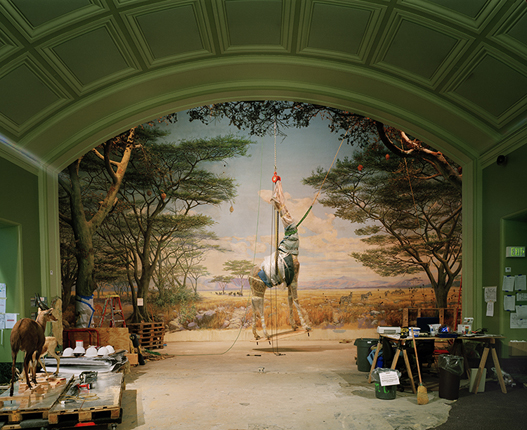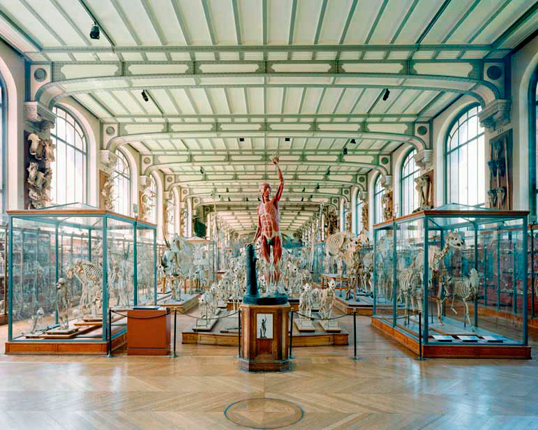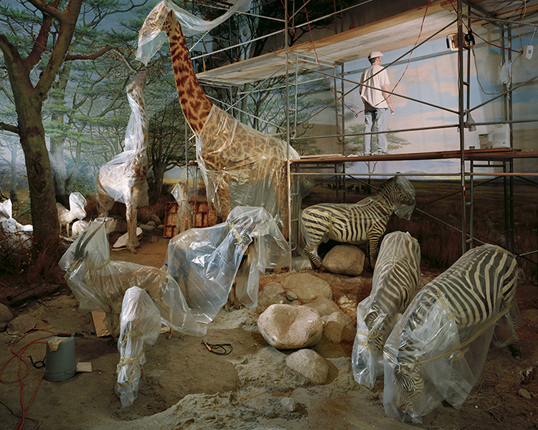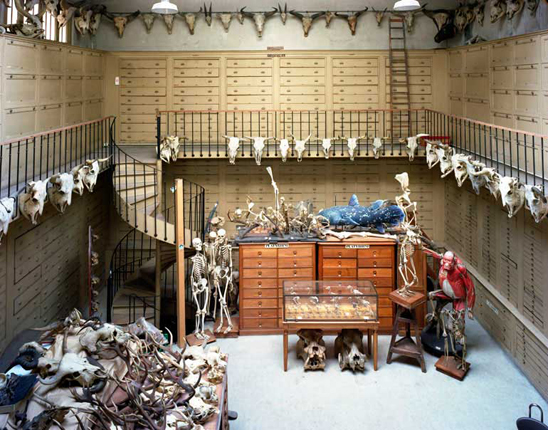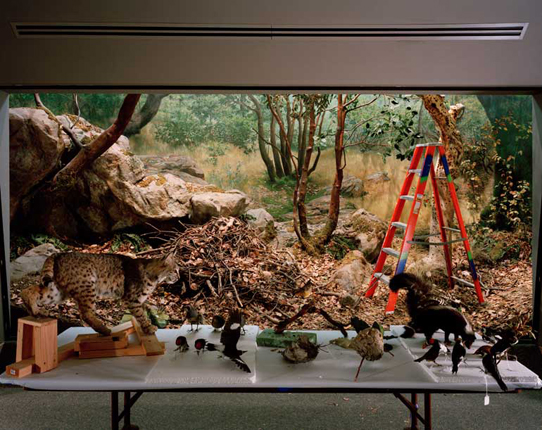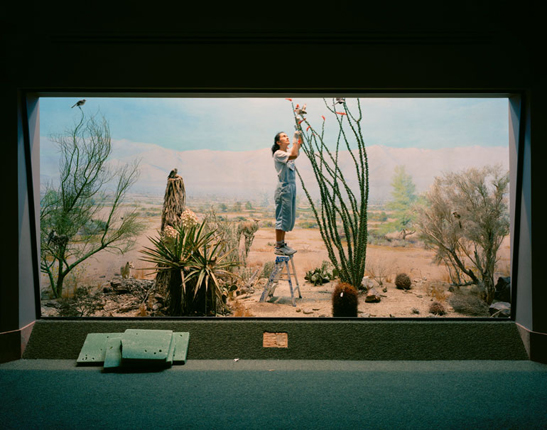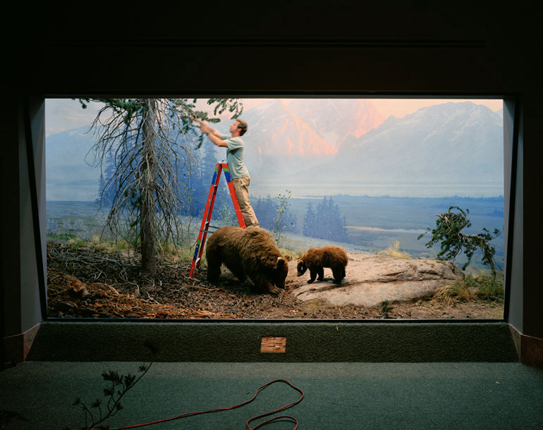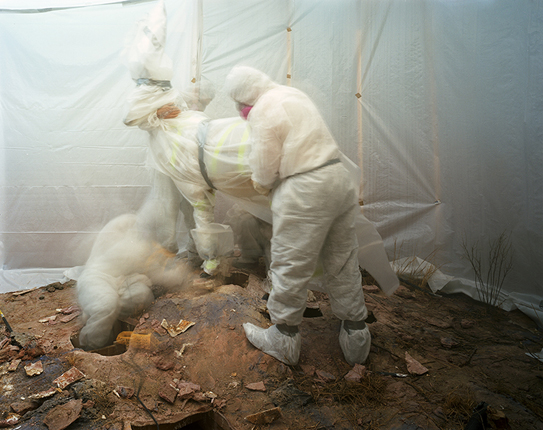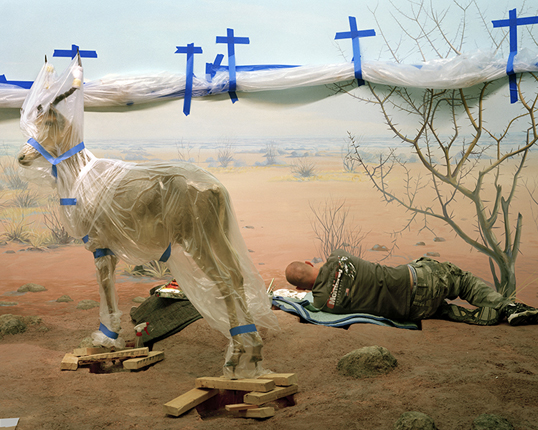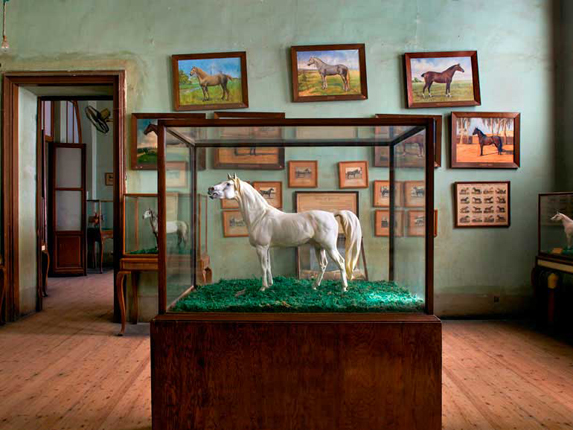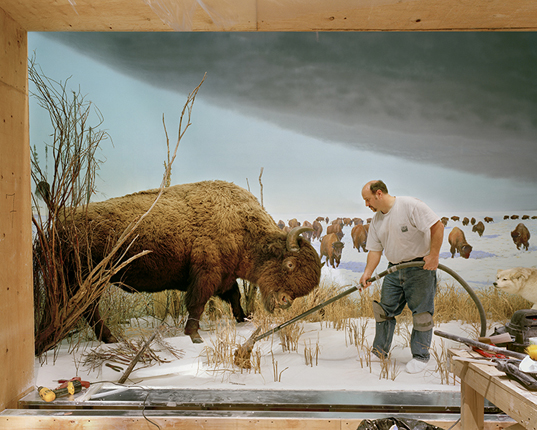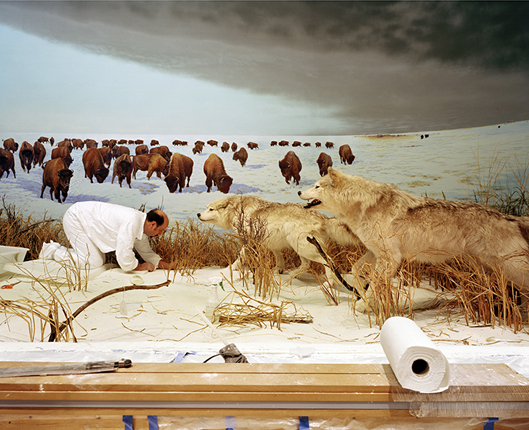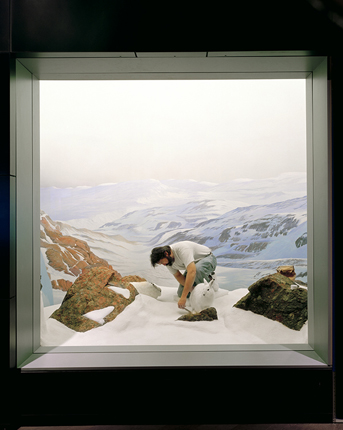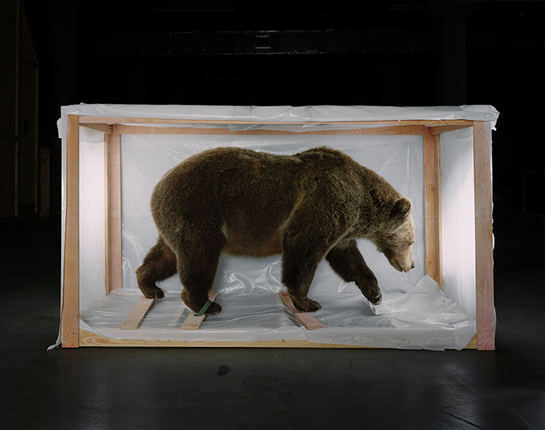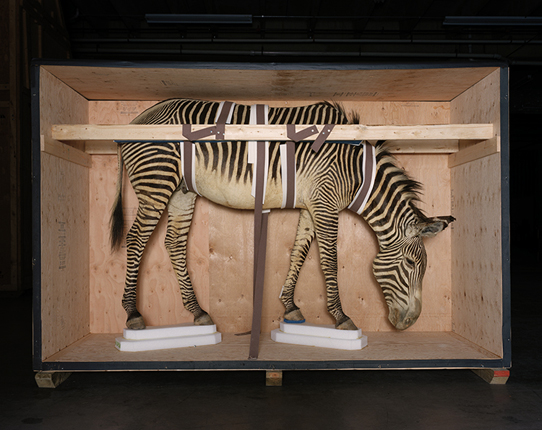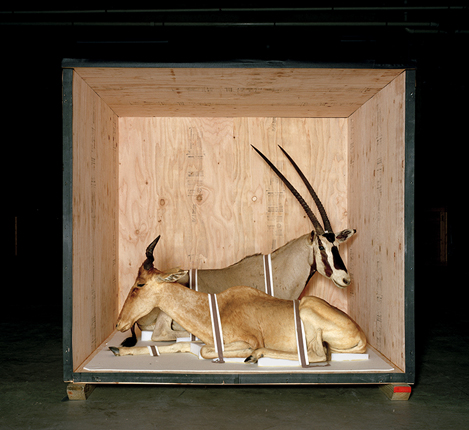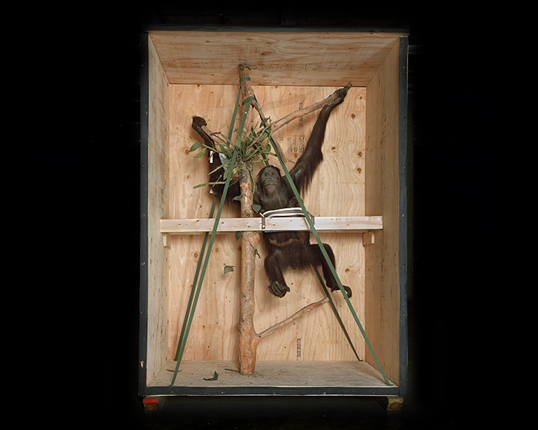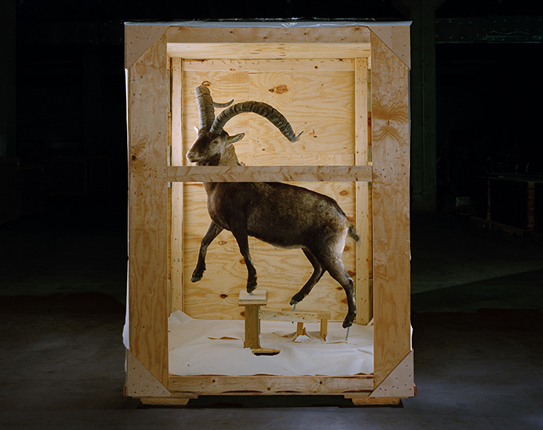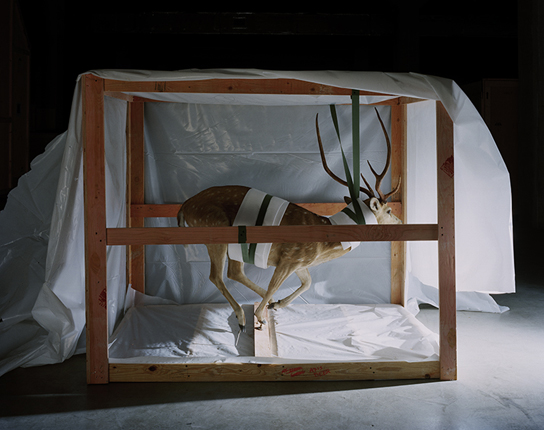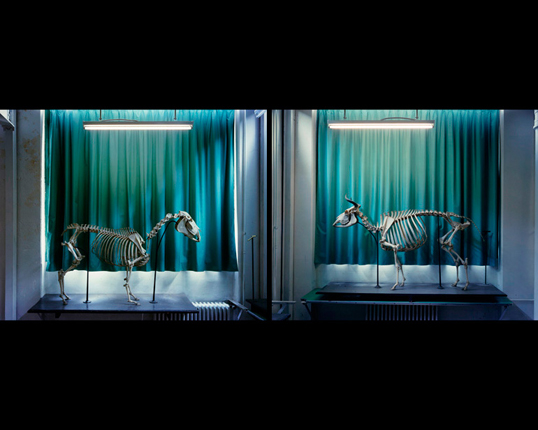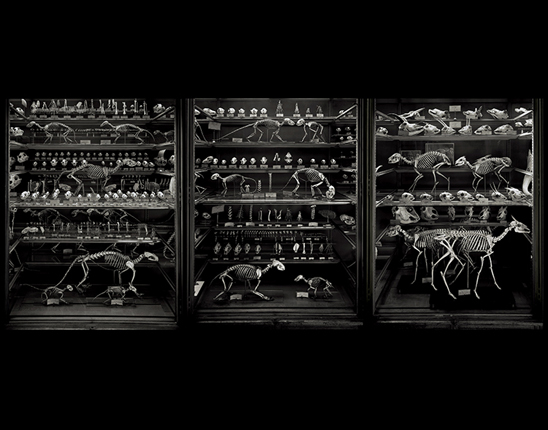Animal Logic has its genesis in my time spent working as a
photographer on archaeological excavations for the joint Yale
University/University of Pennsylvania expeditions in Egypt. For much
of the 1990s, my colleagues and I would make two- to three-month
pilgrimages into the desert, eight hours south of Cairo to a site
dedicated to the god Osiris, called Abydos. There, in addition to the
work at hand, we would consume bad food, freeze in the winter months,
huddled around oil lamps in our Nubian-themed rooms, take sponge baths
in large circular pans we filled with scalding water heated on the
stove, and fight a losing battle with mosquitos—or worse yet,
infestations of bedbugs. In the hotter months, there would be the
occasional viper (or I should say vipers, as I learned they travel in
pairs and prefer to lay about under dig baskets stored on shelves). If
bitten, death is quick and very unpleasant I am told. I confess,
however, that I’ve only seen snakes as roadkill in Egypt, but remain
deathly afraid of them nonetheless. Why do the most extreme
climates—desert or jungle—contain the deadliest fauna?
Working as the excavation photographer was wonderfully romantic on the
one hand and mind-numbingly dull on the other. I remember counting
down the days for the dig season to be over, but always willing to
sign on again when the next opportunity arose. My studio setup was
minimal at best, but the light, reflecting off the desert sand and
onto the whitewashed walls, was extraordinary. It was at Abydos that I
photographed my first animal mummy: a dog, most likely someone’s pet,
destined (or so it seemed before its excavation) to spend eternity in
loyal service to its master in the afterlife. This would be one of the
many hundreds of animal mummies we would extract from the desert. The
ancient Egyptians mummified everything from elephants to shrews—along
with bulls, snakes, crocodiles, birds, rams, baboons, cats, and of
course, dogs—by the millions. After a couple of seasons at Abydos I
began to turn my attention to the places where the artifacts we were
extracting from the ground were ultimately interred. Working first in
the Egyptian Museum in Cairo, I later became interested in how museum
collections develop, specifically in the way they express the
relationship between the natural world and our place, or the human
presence, within it. I started to look at the evolution of the natural
history museum as an embodiment of the process of collection,
curation, and display. I began by working with a collection of bird
nests constructed from detritus we humans throw away and of study
skulls used in veterinary practice, which I found buried in the vaults
of the Carnegie Museum of Natural History.
More recently I have begun to concentrate on the strategies developed
to interpret findings and present exhibitions to the public, via the
diorama and other means. The root of the word museum derives from the
Greek and translates to “place of the muses.” It shares a common
lineage with another evocative word, mausoleum, which comes down to us
from the tomb of Maussollos at Halicarnassus, one of the Seven Wonders
of the Ancient World. What does the word museum have in common with
mausoleum? Douglas Crimp, in his book On the Museum’s Ruins, points
out that although the two words are vaguely related, figuratively they
are one and the same. Museums, like mausoleums, are “containers of the
dead,” great warehouses of objects, a huge percentage of which lies
deep in storage, while a tiny number are on view above. I became
obsessed with what lay beneath, hidden from view, the rarely seen and
mostly forgotten.
In 2005-6, I was awarded the Rome Prize by the American Academy. I had
gone to Rome to investigate a theory that the modern museum as it
evolved in the West originated in Italy with the Christian practice of
collecting and venerating holy relics. To own a piece of the true
cross, or a scrap of cloth said to have been used to wipe the sweat
from Christ’s brow, brought prestige and power to the individual or
church who possessed it. Elaborate reliquaries, often constructed out
of gold or silver, housed the relics, and in a sense these
ecclesiastical “containers” are the precursors of the museum.
Fast-forward several hundred years to Pope Julius II, who early in the
sixteenth century started the Vatican collections in which the public
was encouraged to enter the galleries and learn about art history and
culture. At this time private galleries became public, but the roots
of the natural history museum for me lie in the wunderkammer, and in a
sense Rome was not unlike a vast cabinet of curiosity and wonder. But
instead of rooting around in dark museum basements, I found myself
mesmerized upon looking up at the Roman sky.
Murmur, or murmuration, refers to a gathering of starlings, possibly
derived from the sound their wings make in flight. The ancient Romans
used augurs who would observe the flight of certain birds, or would
sacrifice and read their entrails for signs of what the future might
hold. This was not the case with the starling, however, as they
arrived on the scene much later and modern Romans despise them.
Sturnis Vulgaris, the Latin name for the European starling, begins its
migration from northern Europe in the late fall and arrives in Rome’s
Campagna in massive flocks, said to number in the hundreds of
thousands. This is a relatively recent phenomenon, possibly due to a
warming planet or a change in their food supply. Why travel all the
way to Africa when you can get everything you need so much closer to
home? Each evening at sunset from October to February, flocks of
starlings leave the countryside for the warmer, more protected
environment of the city center. To witness the arrival of the
starlings each evening in Rome is a powerful event, as the flocks
twist and contort into shapes that resemble drawings or elaborate
computer animations in the sky. What looks like a boot or a lung one
moment stretches out and becomes snakelike the next, then almost
instantaneously coalesces into a ball, only to dissolve into another
shape. Scientists are not really sure why starlings engage in this
behavior or how they avoid hitting each other, but the visual effect
of the flock undulating overhead is awe inspiring.
There is a “logic” to the shapes the birds make in the sky that has
everything to do with what we bring to it and nothing whatsoever to do
with a consciousness in behavior on the starling’s part. We interpret
the shapes they make as something familiar, akin to identifying
figures in the shapes of clouds, whereas they might just be avoiding
predation before roosting for the night. This, in a sense, is what
this book is all about: the dual nature of interpretation and shifting
point of view as expressed through our relationship to the animal
world. The interplay between our overwhelming drive to subdue nature
and the devices, such as the diorama, we use to reanimate it after its
subjugation. I recall from when I was photographing the bird nests
that in a few cases, the bird who made the nest had gone extinct
decades ago, and the nest was all that was left to represent it—a
potent symbol of a container for the care and incubation of life, now
sterile and dormant.
In doing Animal Logic, I chose to work with collections in natural
history museums often undergoing renovation. Granted access to the
dismantling process, I was able to cross the proscenium of the stage
and go behind the curtain to reveal the artifice of our fabricated
nature. In these scenarios the conservators, construction workers, and
scene painters occupy the places normally reserved for the animals and
become replacement actors on the stage. These understudies remind us
or our fragile interdependence, just as the animals do in their
fictive states of suspended animation.

